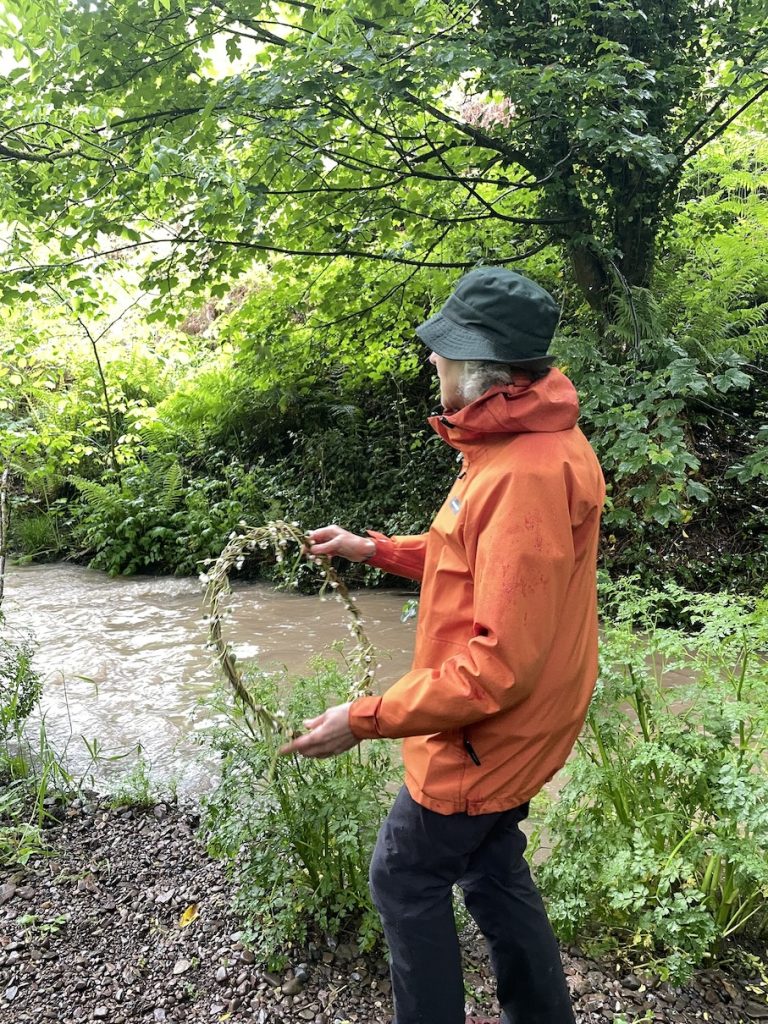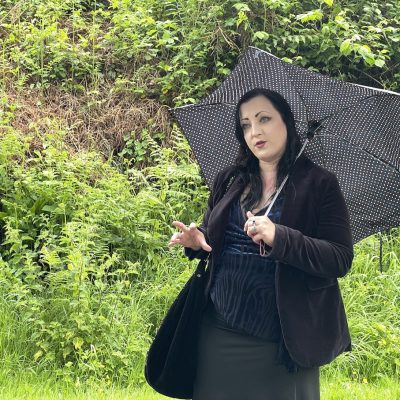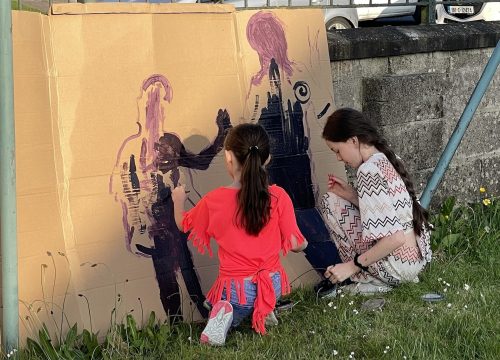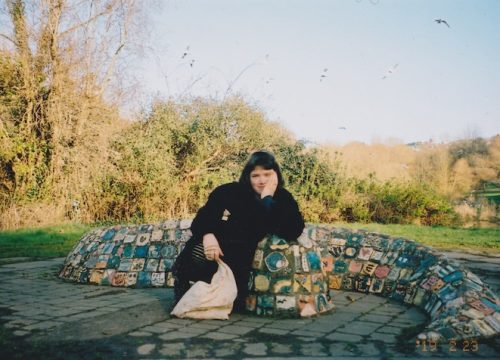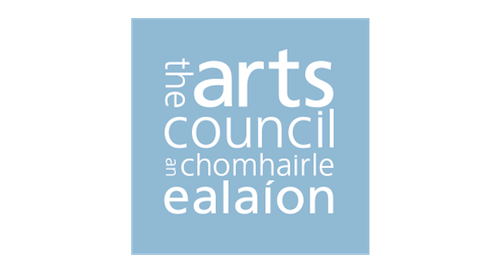Ordinary Gifts Pucaí walk with Jenny Butler
Sunday 26h May ~ Bealtaine Biodiversity with the Pucaí
We had showers and sunny spells with Jenny Butler as we explored the Glen through connection with fairy lore.
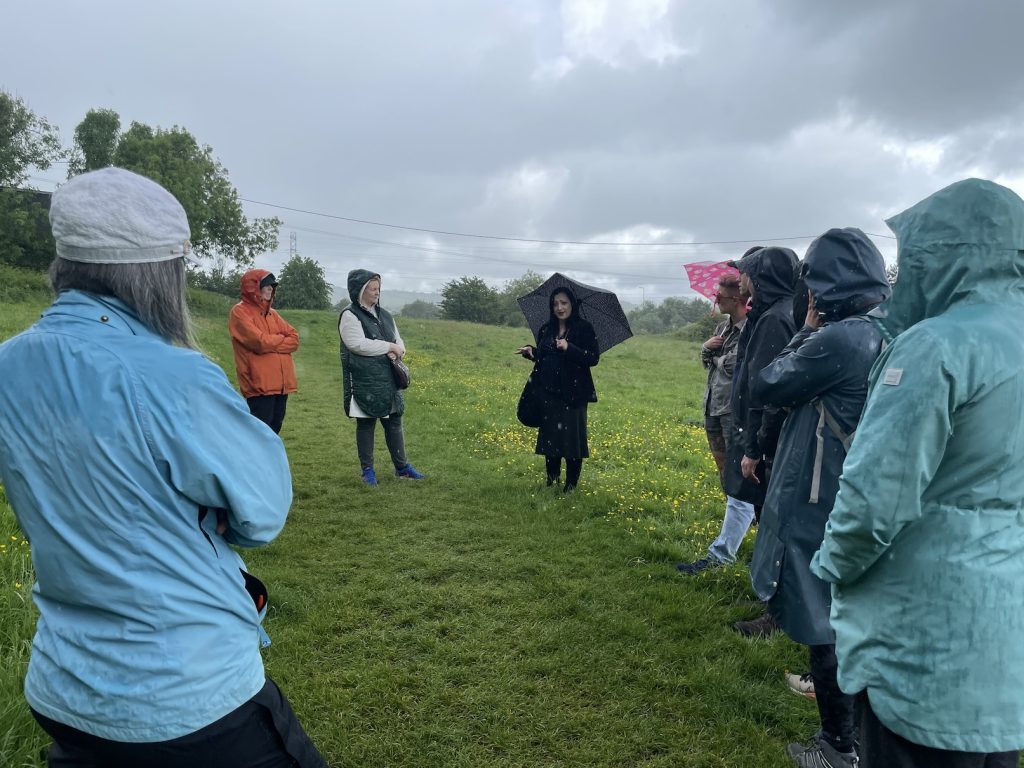
Under the rain in the high meadow we heard about the Sidhe coming from the mounds where we might find a portal to their world, the Otherworld. The Sidhe are connected with the Whitethorn and in May their presence is strongly expressed in the abundance of blossom. We know that we upset the Sidhe at our peril; by interfering with their sacred places we can bring misfortune upon ourselves, the Sidhe protect the land and demand our respect for the wild ways of nature. The vision of lone Whitethorn is still common across the land.
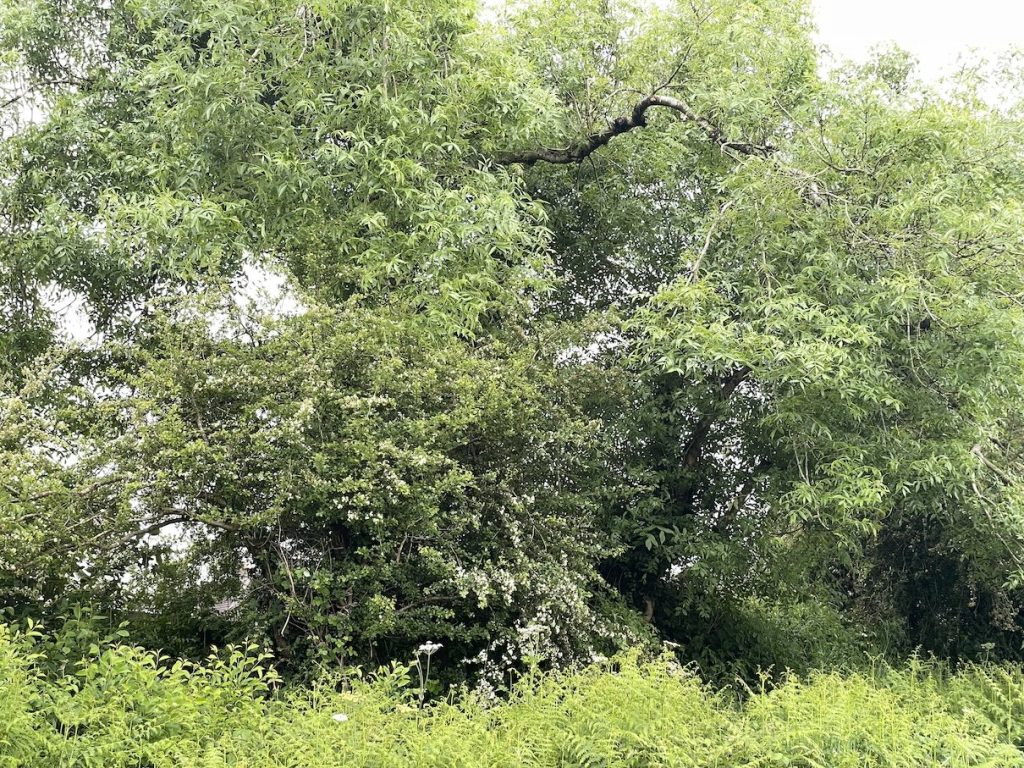
We huddled beneath our hoods and umbrellas and looked over the goal post to the solitary Whitethorn sheltering under a tall ash tree while Jenny told of the legends of the Tuatha dé Dannan. Before the Tuatha de Dannan came the The Fir Bolg. The Fir Bolg were known as “the men of the bags” because they were forced to carry bags of earth by their Greek slave masters, until they escaped and arrived to Ireland, where they ruled, dividing the land into 5 provinces. Then came the beautiful and magical Tuatha dé Dannan – the tribe of Danu, possibly from mainland Europe (named for the deity Danu who also is also in the river Danube). The Tuatha dé Danaan defeated the Fir Bolg and were in turn defeated by the Milesians coming from Spain, who drove the Tuatha underground where they became the Sidhe, immortal fairy folk of Tir na nÓg
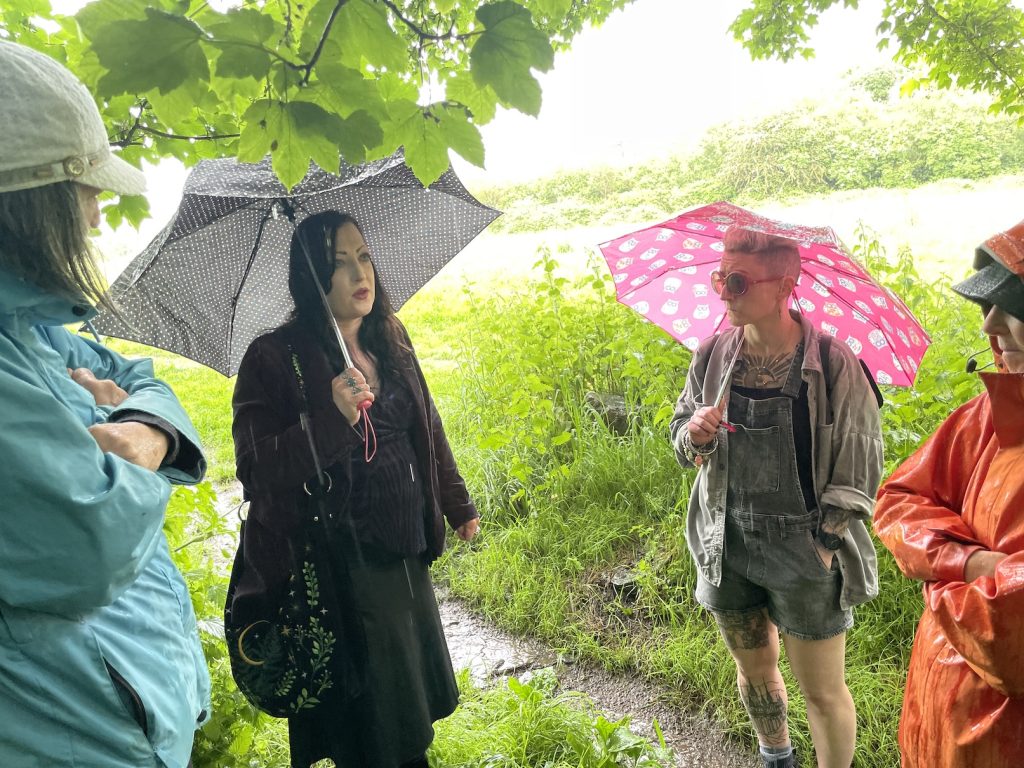
We hear about the will of the fairies, about changelings and abductions as spoken in WB Yeats famous poem Stolen child … to the Waters and the Wild…..
We hear the dark story and relatively recent changeling case of Bridget Cleary, who was accused by her husband and family of being a changeling, tortured and eventually murdered. The husband was convicted of manslaughter and not muder by convincing the judge of his genuine belief in his wife’s abduction by fairies.

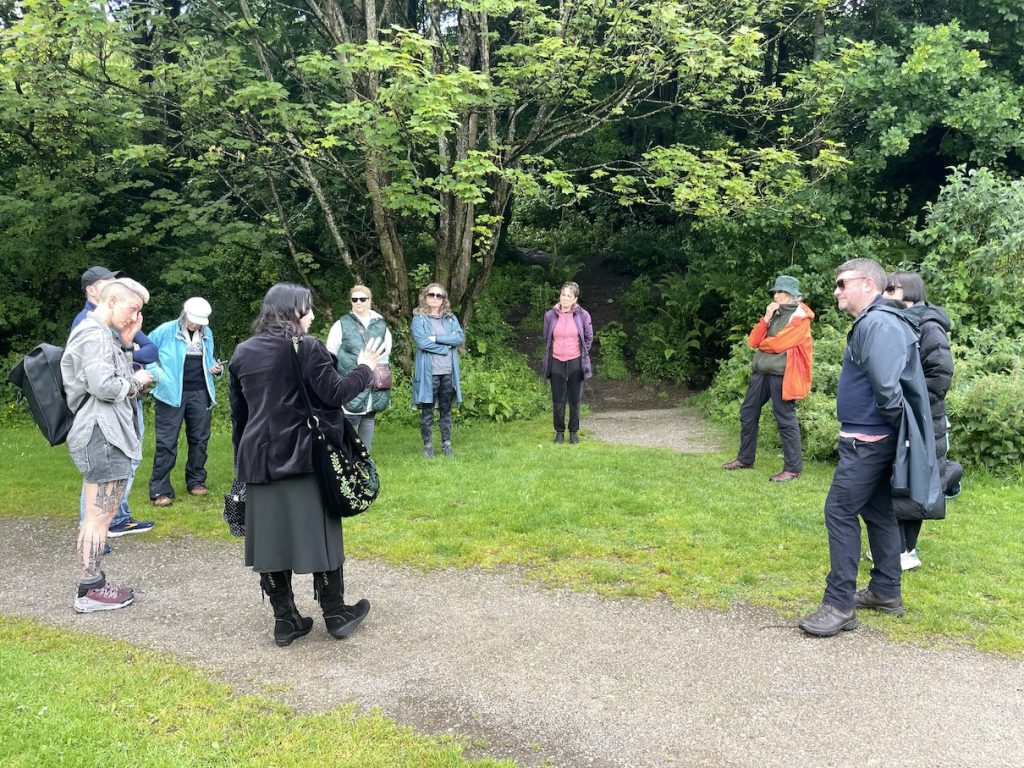
We hear more about changelings and fairy spells – often things become reversed like your elbows and knees will bend the wrong way, or you get stuck in a place as if by an invisible fence or wall, or you get stuck with your tongue in your mouth – you can mitigate against these spells by putting on your clothes inside out, back to front or wearing your left shoe on your right foot.or other self-made reversals, which might counteract the fairies intended ones.
We talk about the Banshees and their supernatural wail, how some people will hear it but not the person its meant for, how the wail is for some families, the Macs the Os and others. We hear about Cliodhna, the Queen of the Banshees, who was swept away by a wave and landed at a rock in Mallow.
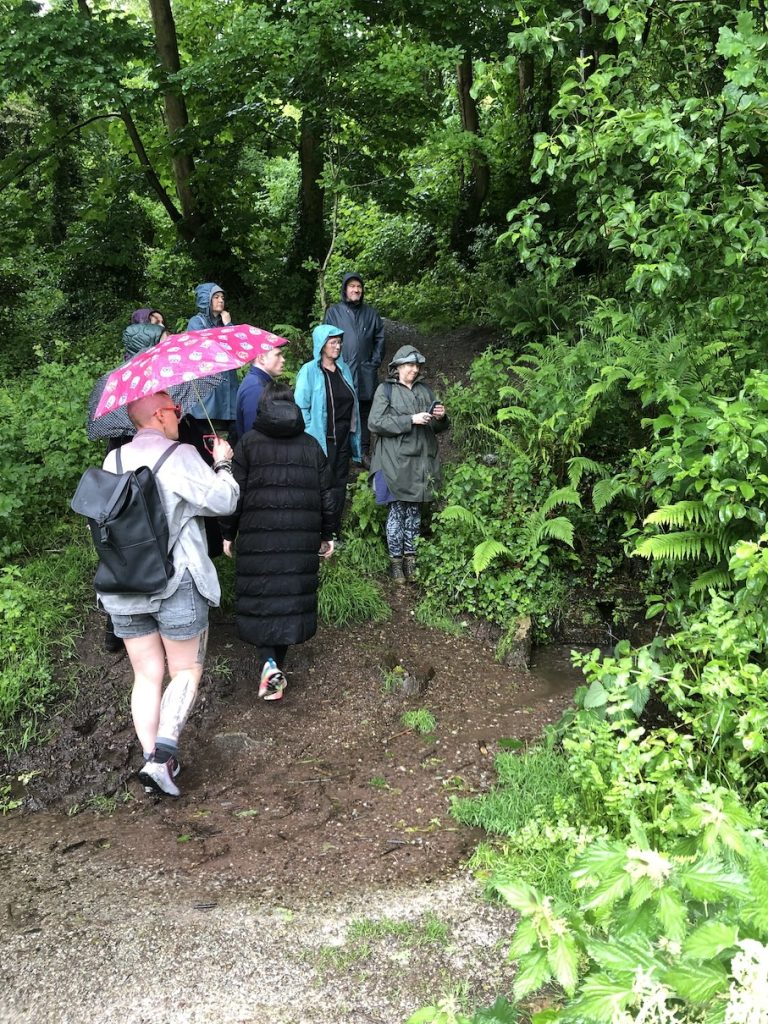
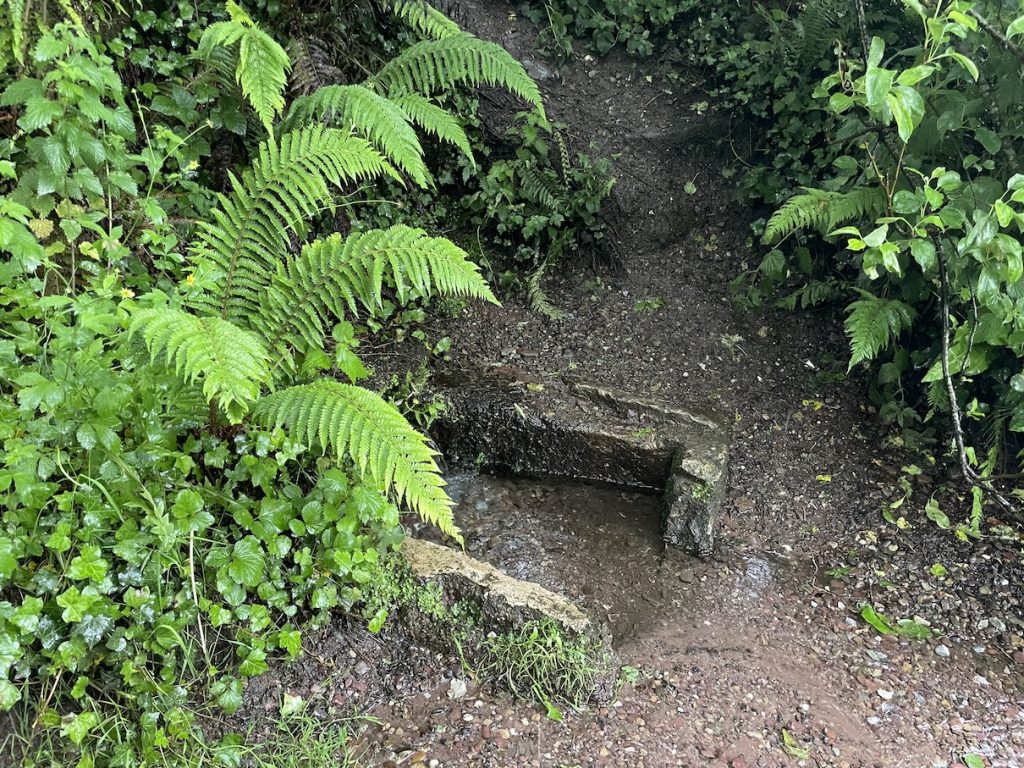
Wells are a dwelling place of the Sidhe and we gathered at the Glen well where the apple tree bends low over its waters.
Elinor invited us to tune in here with some willow and hazel switches – and here the twitch of the switch let us know we had found a connection.
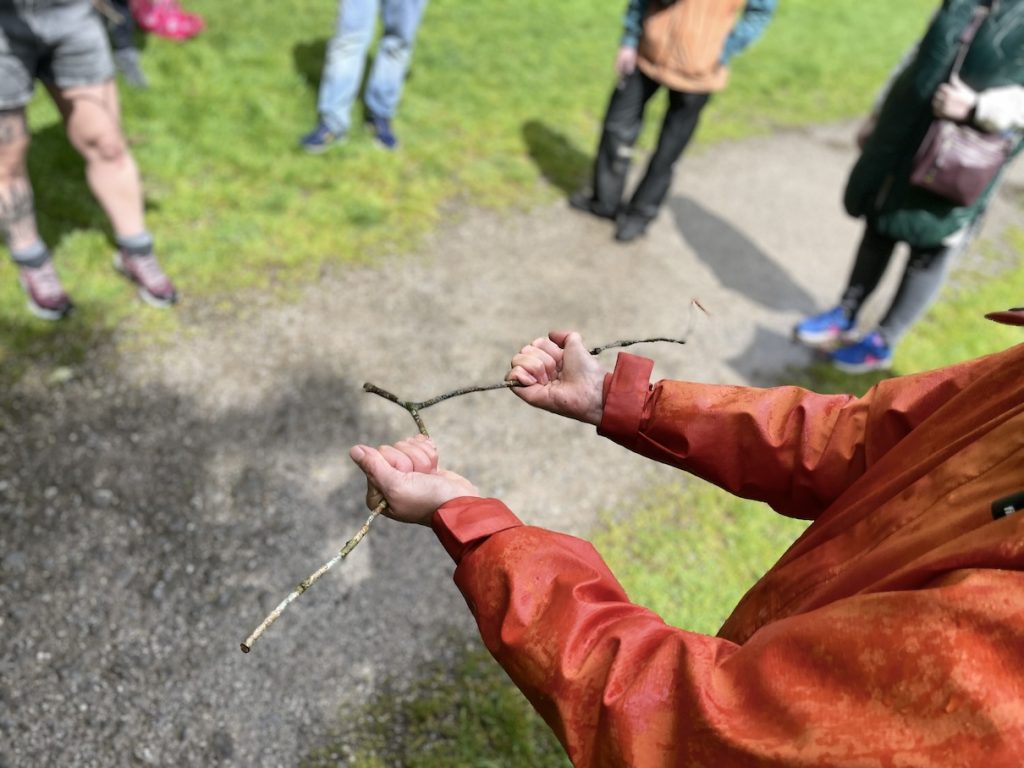
When you hold a switch you pull gently away from the spine and hold lightly in our upturned hands, this allows the spine to move of its own accord.
In another act with water Elinor invites us to cross the water at the metal bridge, and to caste off any burden we might be carrying, she reminds us that walking over water carries a charge which can reset us if we have that intention.
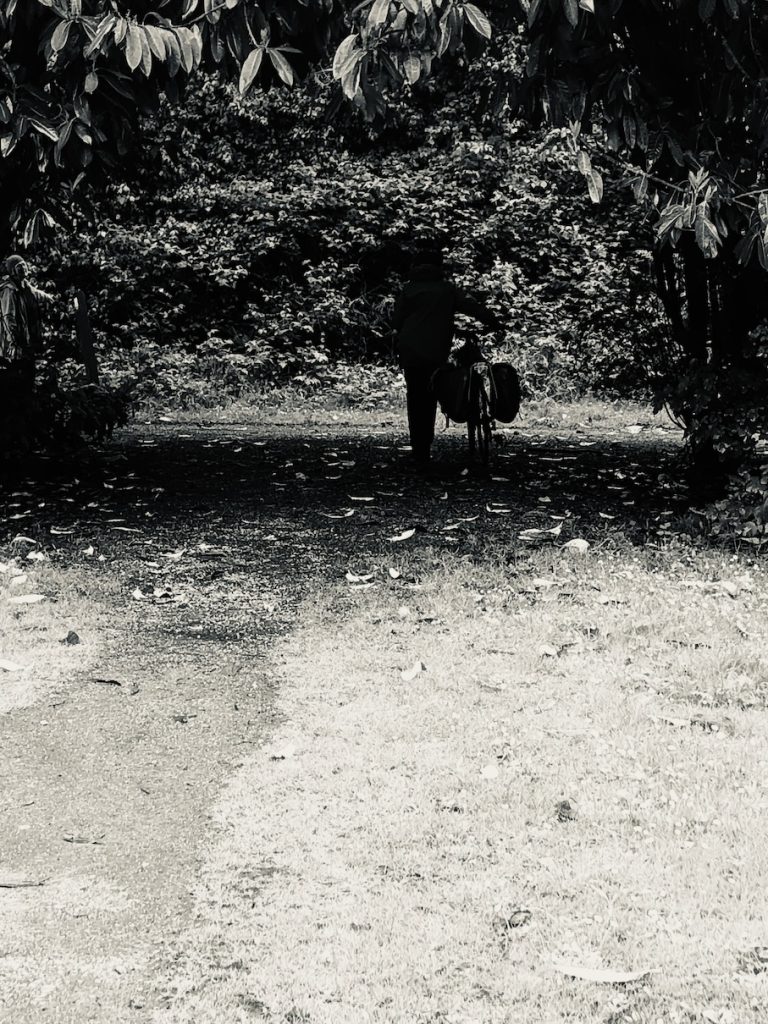
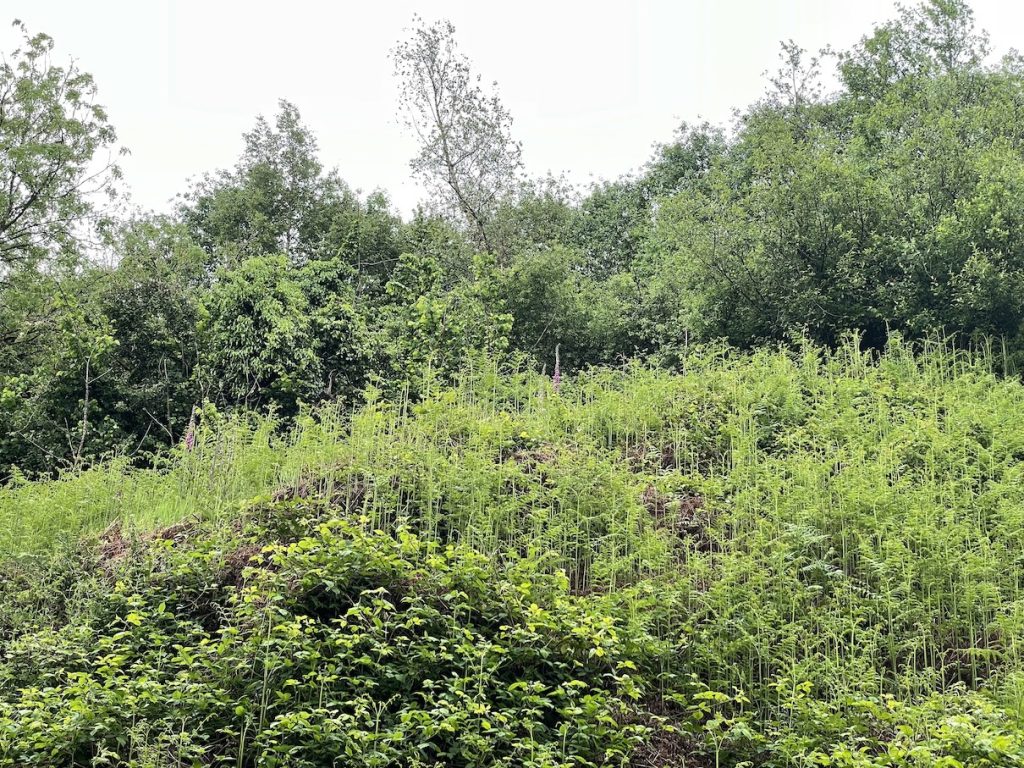
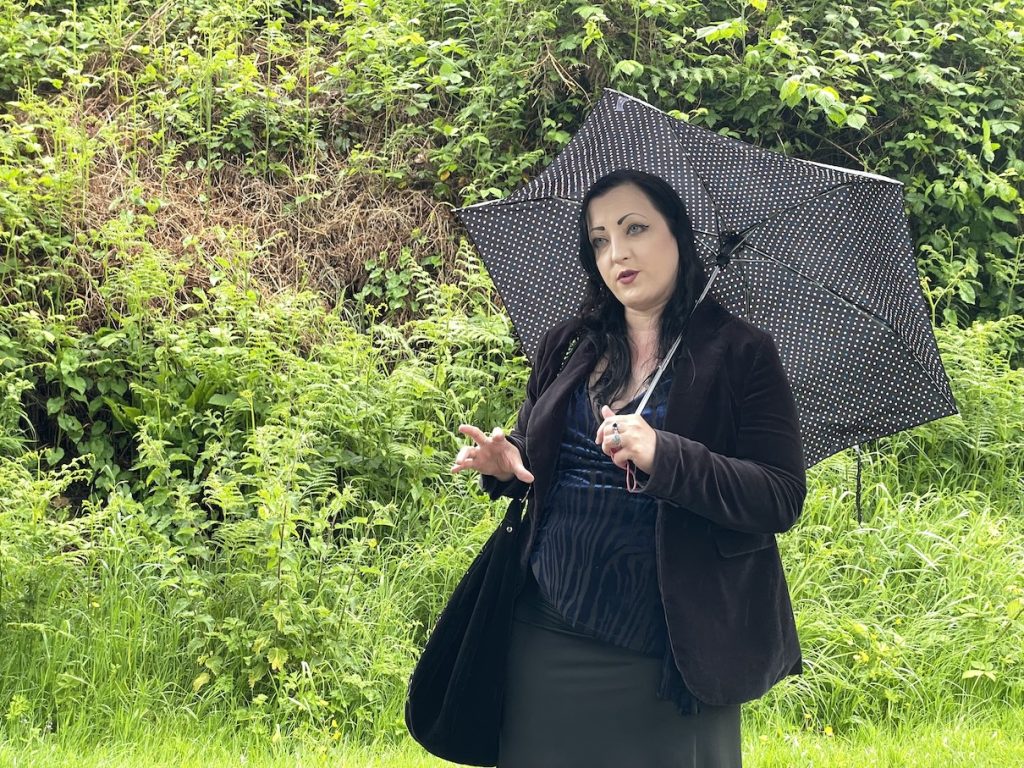
We were brought then to a single early foxglove emerging from the bracken, later I look up the Irish name for fox glove and this is what I find :
Jenny tells us that in fairy lore the foxglove expels the fairy. I am aware of myths that tell by planting foxgloves about the place one can protect oneself from enchantment, and other tales which speak about the danger of hearing the ringing of the bells as this is how fairies communicate with one another and mortal souls are not meant to eavesdrop upon their conversations, or perhaps they are reaching out to draw us in.
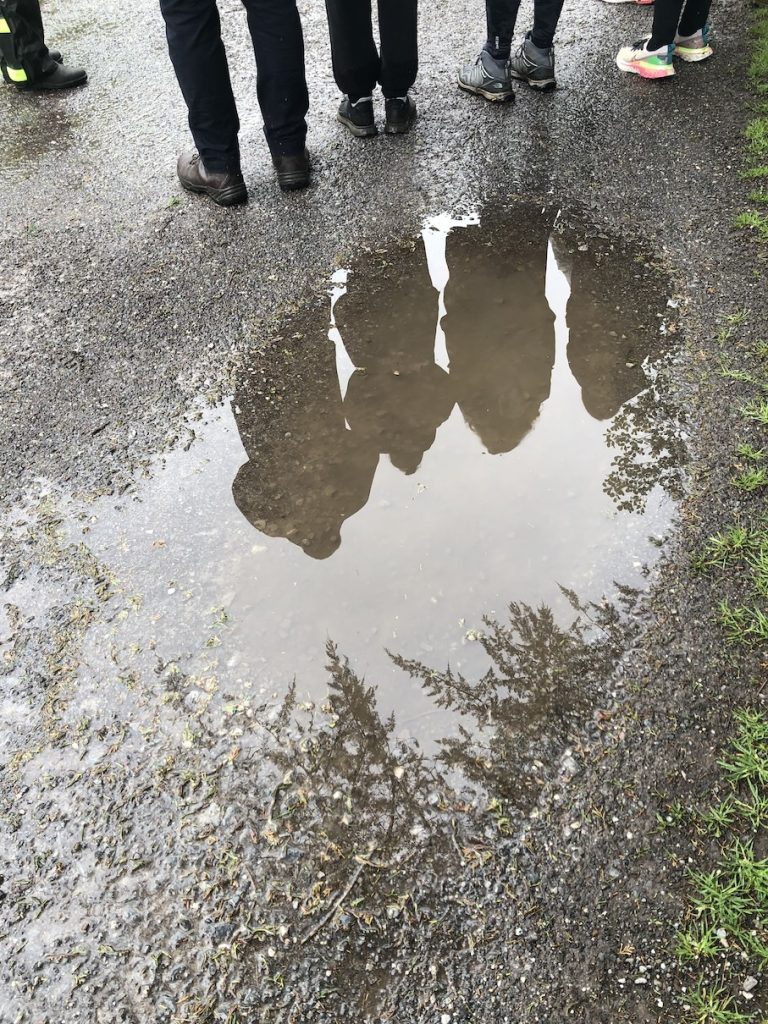
Elinor has brought a crop of daisies she gathered this morning, and those of us still braving the rain gathered to make daisy chains. Elinor speaks of the Daisy or Day’s Eye, its association with purity, innocence and youth, and how the making of the daisy chain for a young one creates a charm to protect them form harm, perhaps from the snatch of the fairies. We wound our chains around a willow frame Elinor had made and scramble down the river bank to witness and cheer, as Elinor cast the wreath into the fast flowing water giving thanks to the river.
